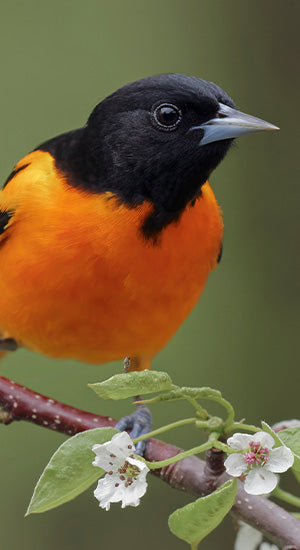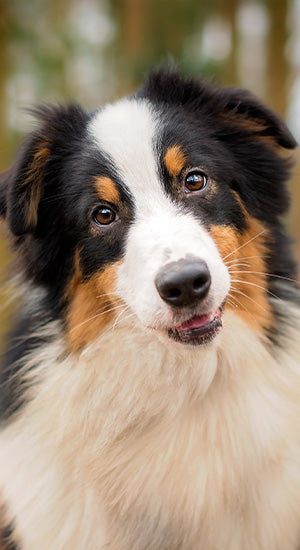
Lineolated / Barred Parakeet - Bolborhynchus lineola
Average Lifespan: 15 Years
Average Length: 15cm (6 Inches)
Average Weight: 47g - 55 g
Colouring: Green with black spots (Wild Type)
Juvenile vs. Mature Plumage:
Young birds look nearly the same as adults, they may appear to be duller and have darker eyes. Often the black dots are not as pronounced due to the duller colour.
In the nominate form this species is bright green overall. A slight bluish tinge on the front of the birds face is sometimes noticeable. The wings are slightly darker green than the body and have noticeable black bands. The base of the tail has a varying amount of black dots, and the tail itself may have black feathers through it.

Lineolated parakeets can be visually-sexed with some degree of accuracy. Males of the species tend to have more black dots and feathers, especially in the tail and flanks. Additionally, males tend to be larger than females with a "blockier" head. DNA testing is recommended to be sure, though.
Summary: ...
Migration: ...
Wild Status
Stable Trend - At Least Risk

Nest Box: Breed well in a 6" x 12" reverse L-box. It is important to provide a 2"-3" layer of aspen shavings to absorb droppings and prevent splay legged babies.
Frequency of Breeding in Canada: Very common, lineolated parakeets breed readily and easily in a captive setting. They do not require a lot of space to thrive and reproduce.
Age of Maturity: ...
Avg. Clutch Size: 2-5 eggs
Incubation: 27 days
Weaning: 10-12 weeks
Breeding Season:
In the wild, breeding takes place toward the end of the rainy season which occurs in the fall from September to November in Africa.
No set season for breeding indoors. These birds breed based on environmental conditions and therefore can be manipulated to breed at any time of the year.
Breeding Difficulty: ...
Notes:
Should be tested by DNA for Psittacine Beak and Feather Disease (PBFD) and cleared prior to breeding. Birds which are the product of breeding generations without outcrossing tend to be more fragile than those which have been bred well and have a frequently outcrossed lineage.
Genetics: Lineolated parakeets are bred in a variety of colours. This can commonly be broken into two colour series; green series and blue series. Some mutations can be both green series or blue series, that will also be covered below.
It is easiest to begin with those mutations which do not prescribe to one specific series. In lineolated parakeets these mutations are “dark factor” and “greywing”. “Dark factor” exhibits an incomplete dominant pattern of inheritance. This means that dark factor linnies can be either single-factor (SF) or double-factor (DF). Single-factor individuals have and show just one dark factor gene, whereas double-factor birds will have and show two copies of the dark factor gene. “Greywing” is fairly similar, but it follows a sex-linked incomplete dominant pattern of inheritance. What this means is that the gene is linked to the ‘Z’ chromosome. For this reason, female linnies can only be single-factor greywing, but will look like double-factor. Males, on the other hand, can be both single-factor and double-factor.
In the green series we see wildtype - the nominate green bird, dark-factor variations, greywing variations, and lutino. The nominate form is dominant in inheritance. Lutino is sex-linked recessive. Like greywing, female birds can only have one copy of the gene and therefore it only takes one copy of the gene for a female to visually express the mutation. Males, on the other hand, require two copies to visually express the lutino mutation. Because it is sex-linked recessive, without two copies the male bird will carry the gene but not express it.
In the blue series the equivalent to a wildtype is called turquoise. Turquoise is considered as a parblue mutation. There is no “true blue” in linnies. Turquoise is recessive, and because of this an individual needs two copies of the gene to visually express the mutation, regardless of whether or not the individual is male or female. Like green series birds, birds considered to be blue series can also have dark-factors as well as be greywing. These traits still inherit the same way as they do on a green series bird. There is also creamino in the blue series, which is effectively the parblue version of lutino. Like lutino, creamino also follows a sex-linked recessive inheritance. There is no albino mutation in lineolated parakeets, because there is no “true blue”.
It is said that in Europe a cinnamon, misty, and violet mutation also exist. There is limited to no information online about these mutations and what patterns their genes follow at this time.
G = green , g = turquoise
Green(GG) male x Turquoise(gg) female, because these birds are homozygous only one of each letter is needed to represent the genes. Since green is dominant to blue, 100% of the babies will be green but carry the gene for turquoise. We call these offspring “Green split turquoise”. In text this will often be abbreviated to “Green /turq”. These offspring can go on to produce turquoise if they are bred to another split turquoise, or to a visual blue series bird.
G |
|
g |
Gg |
G = green , g = turquoise , XD. = dark-factor
Dark green (GDG) male x Cobalt (gDg) female, because these birds are heterozygous each gene must be represented in the cross. This cross is a little more complicated than the first. Not only are there more genes, but there are also more patterns of inheritance to consider. Like before there is the dominant green and recessive blue, but now there are also incomplete dominant dark-factors. The result is 25% olive /turq, 50% dark green /turq, and 25% green /turq.
GD |
G |
|
gD |
GDgD |
GgD |
g |
GDg |
Gg |
G = green , g = turquoise , I = not “ino” , i = “ino”
Creamino male (ggii) x Green split turquoise (GgII) female. The male in this case is homozygous, where the female is heterozygous. That is why the male only has one gene in the cross, while the female has two. Remembering back to the writeup earlier, creamino is sex-linked recessive, also called Z-linked recessive. So our results here are 50% Green /turq/ino and 50% creamino. Something really cool about sex-linked traits is that sometimes they can be used to determine whether a baby is male or female. Because dad was a visual “ino”, any visual offspring will be females, this also works for males which are split. This method does not work in crosses where the hen is a visual “ino” since that opens the possibility that a male may inherit copy from both the maternal and paternal genetics, resulting in the two copies a male needs to be visual.
gi |
|
GI |
GgIi |
gI |
ggIi |
G = green , g = turquoise , XD = dark-factor , XS = greywing , I = not “ino” , i = “ino”
Olive SF greywing /turq/ino male (GDgDISi) x Creamino female (ggIi). This is a big cross, involving every genetic trait we’ve talked about. Working out the phenotypic ratios may appear overwhelming for someone that is new to linnie genetics, but it is really not that difficult when you consider that mom is a creamino. Due to female birds only having one Z-chromosome and creamino being a Z-linked trait, we know that “gi” is representing the Z-chromosome. This results in the four outcomes of the top row being hens, and the four outcomes in the bottom row being males. So we get 12.5% dark green SF greywing /turq, 25% lutino /turq, 12.5% cobalt SF greywing, 25% creamino, 12.5% dark green SF greywing /turq/ino, and 12.5% cobalt SF greywing /ino. Make note that because both parents had a gene for “ino”, both male and female offspring can be visual and therefore this method cannot be used to indicate sex. However, because a female bird will always look like a DF greywing even though she only has one gene, the greywing offspring can be sexed visually with relative ease. Also keep in mind that only male birds can be split for “ino”, and all male birds in this cross are split “ino”.
GDIS |
GDi |
gDIS |
gDi |
|
gI |
GDgISI |
GDgIi |
gDgISI |
gDgIi |
gi |
GDgISi |
GDgii |
gDgISi |
gDgii |
Wildtype(green) → dominant
Dark Factor → incomplete dominant, SF / DF
Greywing → sex-linked incomplete dominant, SF / DF (DF in males only)
“ino” → sex-linked recessive
Turquoise (parblue) → recessive
Proper Pairing: As with all birds, two red-eyed birds should never be crossed. Additional to this, it is extremely unadvisable to breed two greywing birds should also not be bred to one another. It is always a good idea to cross back to a normal green bird that is of proper size and good health every 2 or 3 generations to increase the vigor of the mutation birds, which tend to become more frail with each crossing.
- Lineolated parakeets tend to have very fast-growing nails, it is important to stay on top of nail trimmings with this species
- In addition to fast-growing nails, linnies have soft nail beds. It is very easy to accidentally remove the nail from a linnie
- This species benefits from additional vitamin A in the diet, foods like peppers, sweet potato, and cantaloupe are good sources of this nutrient












